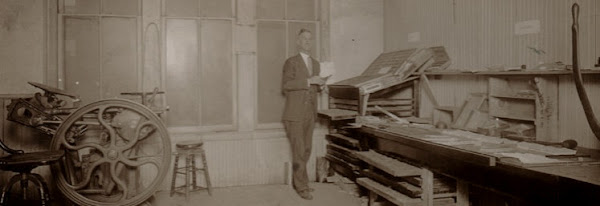There are 12, 14, 24, 24 Condensed, and 30 point caps fonts with figures and points and one 36 point complete upper and lower case font with points and figures. Lucky boy, eh? I spent a quiet evening yesterday distributing them. Thanks to my friend Alan I had a triple and a double caps case for the caps fonts.
Altogether I ended up with about 20 fonts. Other faces include Bank Script and Bank Gothic (go figure), Cheltenham Outline, Franklin Gothic, etc. plus a huge font of 6 point 20th Century Light. There were a number of outline style fonts that I attribute to the nature of the work they were doing with legal documents, certificates, etc. though that's an assumption.
I have more type than I have cases for right now. I know: boo-hoo poor me. I've never had new type before and it's a thrill and a lot of fun unwrapping it, untie-ing it on the galley, and then distributing it line by line. I also find it very relaxing. I'm saving the proofs that are glued to the top of the paper wrapping on each font. An extra bonus is all the 2 and 6 point lead and slug stock and some heavier slugs recovered from each package.






